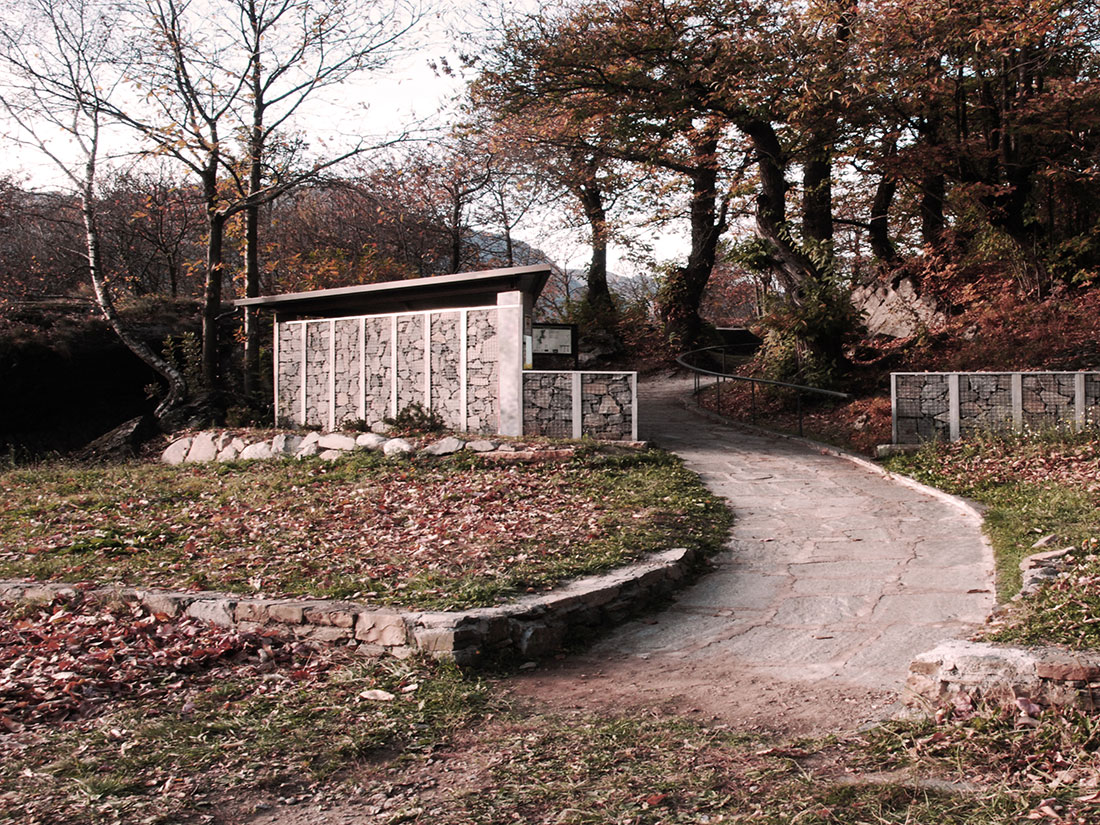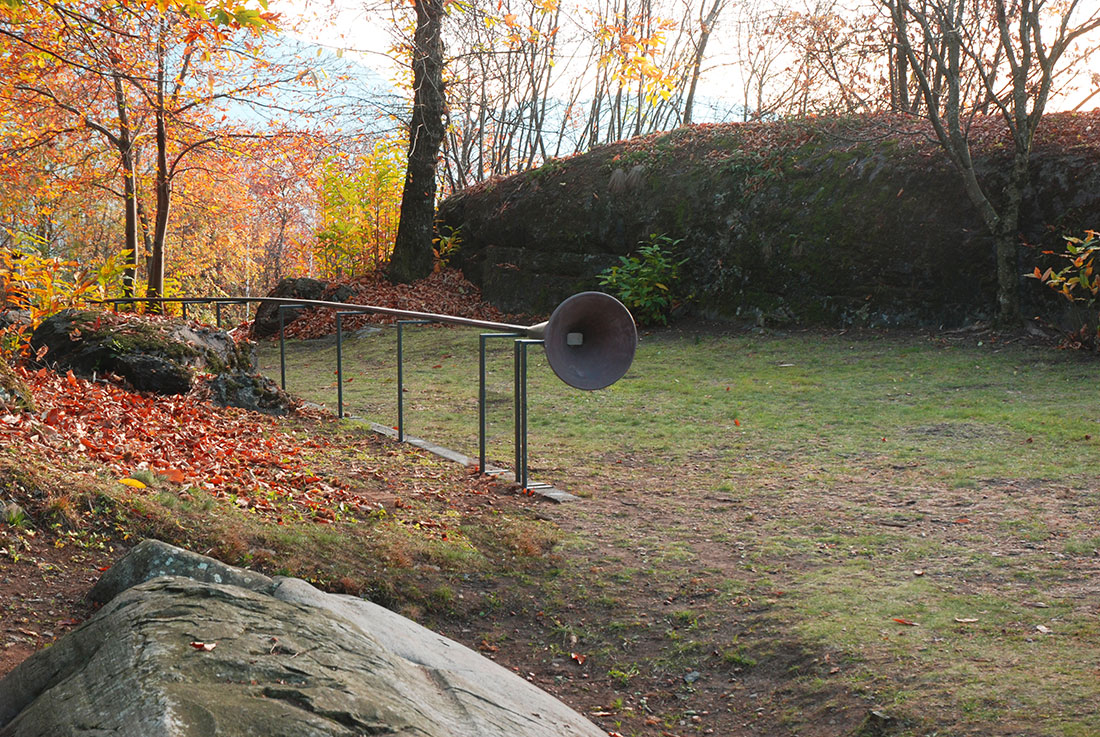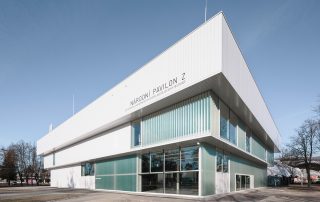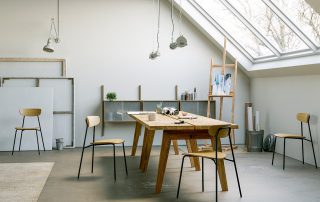The project is part of a wooded area, a natural terrace overlooking the Camonica valley, named the first UNESCO site in Italy for the presence of significant historical rocks. In order to make the area accessible to everyone and to integrate the new elements harmoniously with the natural context, the intervention exploits the topography forming a continuous ribbon about 80 meters long. This structure guides the visitor from the parking to the first and most significant rock. In this place, the ribbon modifies its shape becoming a sound device that, recalling the ancestral sounds of the incisions, signals the presence of the rock.
The main idea of the project raises from two different points: from one side it aims to overcome the common division between abled and disabled users; on the other, it reflects on the ability to transmit information in the field of cultural and landscape heritage.
In this sense, the intervention is intended as a device capable of interacting with the individual perception in order to generate sensations and emotions useful to fix the memento of place and experience in the visitor’s memory.
The structure stimulates multiple human senses: the sight, the hearing through an analogue sound reproduction device, and the touch through the vibrations diffused by the structure, the changes of coating material and the special carved tiles.
The device allows new and multiple experiences of the place, while all the general information is presented inside the pavilion at the entrance.
What makes this project one-of-a-kind?
Beside the reflections and studies concerning accessibility and communications in cultural and landscape heritage, the most important quality of the project is that, from the beginning, it develops itself in synergy with the local community, through the use of resources, materials, skills and crafts typical of the Valcamonica territory.
Some preliminary surveys, carried out together with the Cooperative “Il Cardo”, have made it possible to identify the main problems of accessibility and perception, for elderly and people with disabilities, which the intervention, in its simplicity, has tried to eliminate.
In order to encourage community participation in the project it was organized a workshop, in collaboration with Il Cardo, for the design of the concrete tiles that cover the structure. These drawings reinterpret the ones on the engraved rocks and, at the same time, personalize the structure making it a tactile device.
The structure, formally very simple but articulate in its functioning, was realized thanks to the skill of local artisans who took care of building the metal support, fabricating the cladding tiles, creating the cement bell and the analogic sound mechanism.
Text provided by the architects.








Credits
Architecture
Marco Ballarin, Stefano Tornieri, Massimo Triches; Babau Bureau and Elisa Brusegan
Client
Comunità Montana della Valle Camonica
Year of completion
2017-2018
Location
Paspardo (BR), Italy
Area
Total area: 4 200 m2
Site area: 200 m2
Photos
Filippo La Duca, Babau Bureau
Project Partners
OK Atelier s.r.o., MALANG s.r.o.









